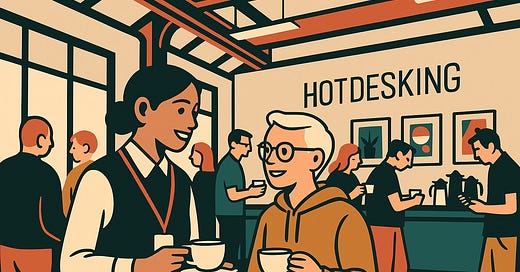This post is by Oli Littlejohn, facilitator for our upcoming No-Code workshops and founder of nocode.scot. Oli shares his views on how no-code tools can unlock practical solutions for businesses.
Historically, the ability to build software was limited to a small group of people - estimates put the number of people in the world who can code at 0.5%. In the world of business, this created a persistent bottleneck: great ideas could only come into existence if there was time, budget, and developer bandwidth. As software became central to every business, this gap between business needs and technical capability widened. But today, with the rise of nocode tools, the answer to “who gets to build software” is being rewritten.
Until recently, building software meant writing code by hand. Programming languages required years of study and practice. Businesses had to hire teams of engineers or outsource development - an expensive and often slow process. As a result, only well-resourced companies could afford to build custom tools, apps, or automations. Meanwhile, “non-technical” employees - the ones closest to real business problems - had limited influence on the solutions. By the way, I kind of hate the binary term “non-technical” - we’re all “technical” in different ways.
The rise of no-code platforms changed that. Tools like Webflow, Airtable, Glide, Zapier, and Bubble allow people to create websites, apps, databases, and automations without writing a single line of code. Operations managers can now automate workflows, marketers can launch interactive landing pages, and founders can test MVPs (Minimum Viable Products) - all without waiting for engineering resources. Nocode doesn’t just make building faster; it makes building possible for people who were previously shut out of the process.
In a business context, this shift is powerful. Software is no longer something you have to buy or outsource - it’s something you can create in-house, by the people who will actually use it on a daily basis. Internal tools, dashboards, custom CRMs (Customer Relationship Managers), and tailored automations can be built by the people who need them most. Nocode puts the power to solve problems directly in the hands of the employees who are experiencing them.
But the landscape is evolving again. With the introduction of AI tools like Lovable and Replit, a business analyst with no formal computer science background can describe what they want in plain English - and get a working app back. These AI copilots can write scripts, generate app logic, or, if you want to, have them debug existing code. This creates a new category of builder: someone who can’t code fluently but can read, edit, and create with AI assistance.
So, who gets to build software now? Increasingly, the answer is: anyone with a problem to solve and a browser. While technical skill still matters, it’s no longer the only way in. In today’s businesses, builders come from every department, not just engineering. As no-code and AI continue to evolve, building software may soon be as common - and as essential - as writing a business plan. The age of the technical gatekeeper is ending. The age of the empowered builder is just beginning.
Oli runs workshops and sometimes writes about No-Code solutions at Developed, visually. You can find his no-code community here.
Borders Tech Connect
Visit and bookmark our Calendar page here
Or visit our event pages and register for the events themselves.
Meet-up 1: No-Code/Low-Code
Thursday, May 1st 12:00 - 14:00 Borders College
Workshop 1: No-Code/Low-Code Start
Friday, May 9th 10:00 - 13:00 Borders College
Workshop 2: No-Code/Low-Code Progress
Friday, May 30th 10:00 - 13:00 Borders College
Workshop 3: No-Code/Low-Code Finish
Thursday, June 5th 10:00 - 13:00 Borders College






